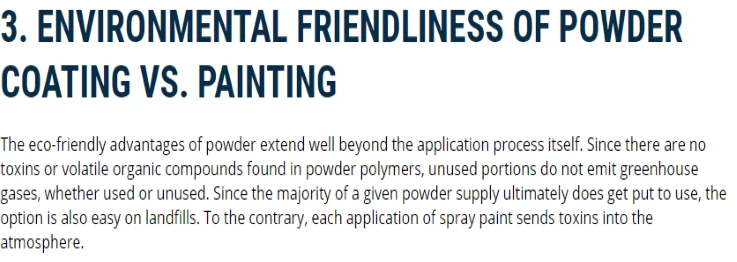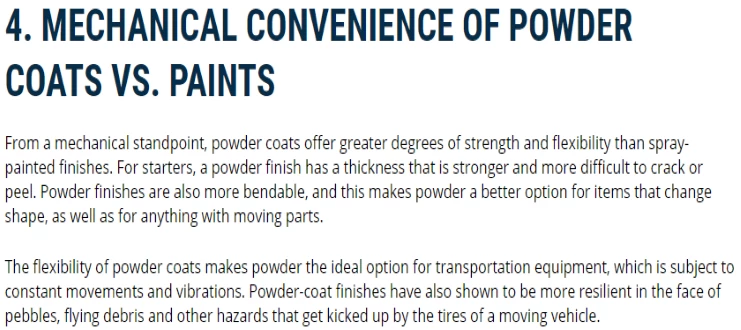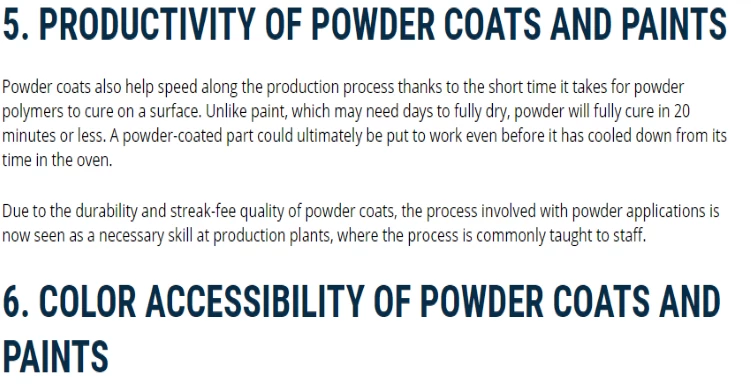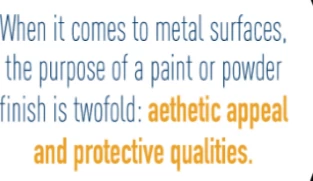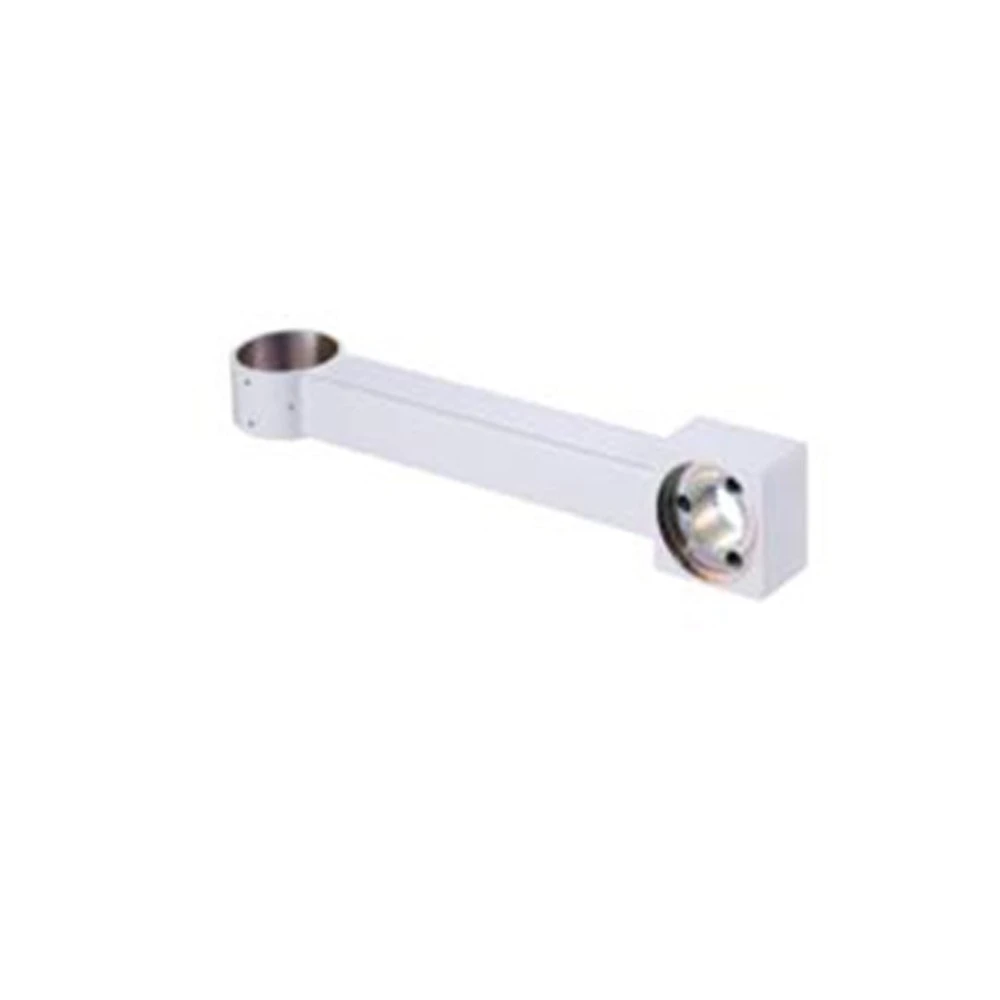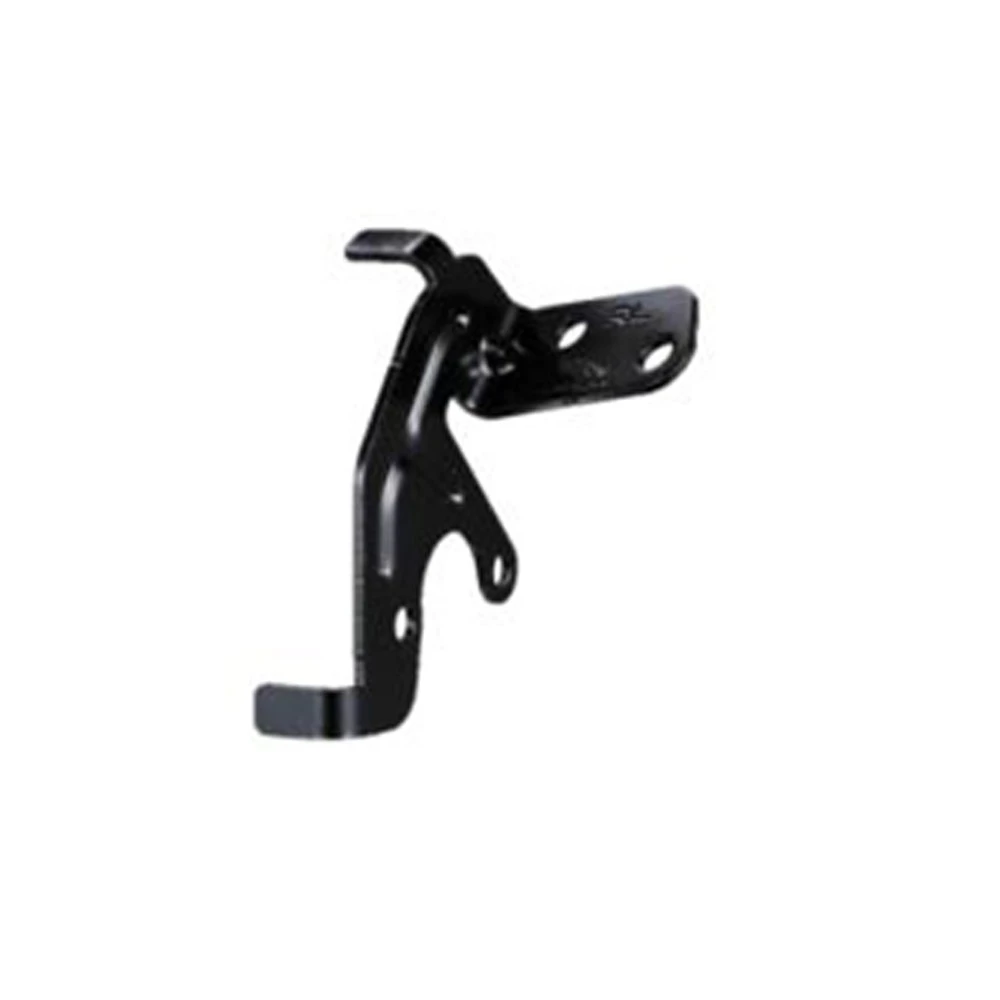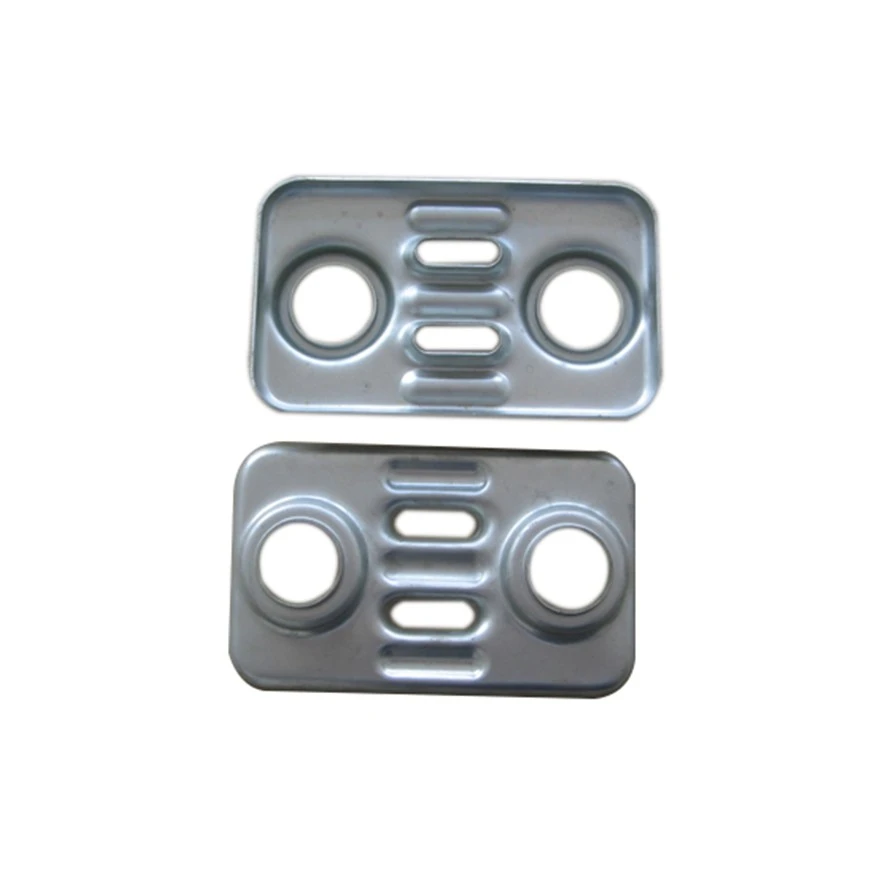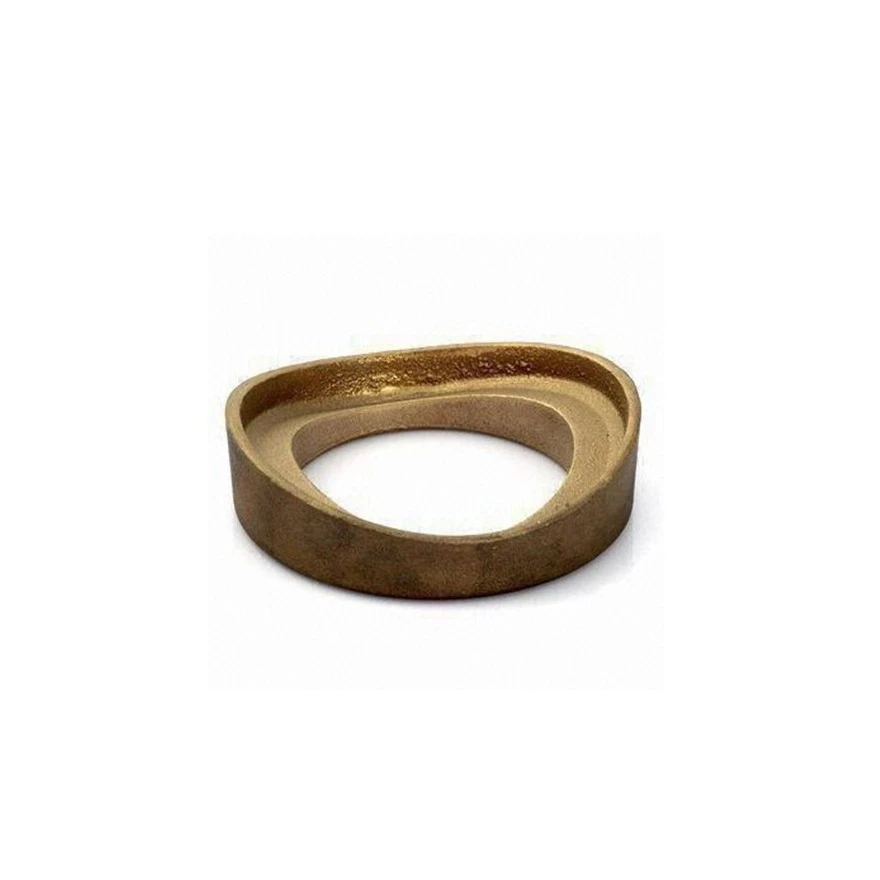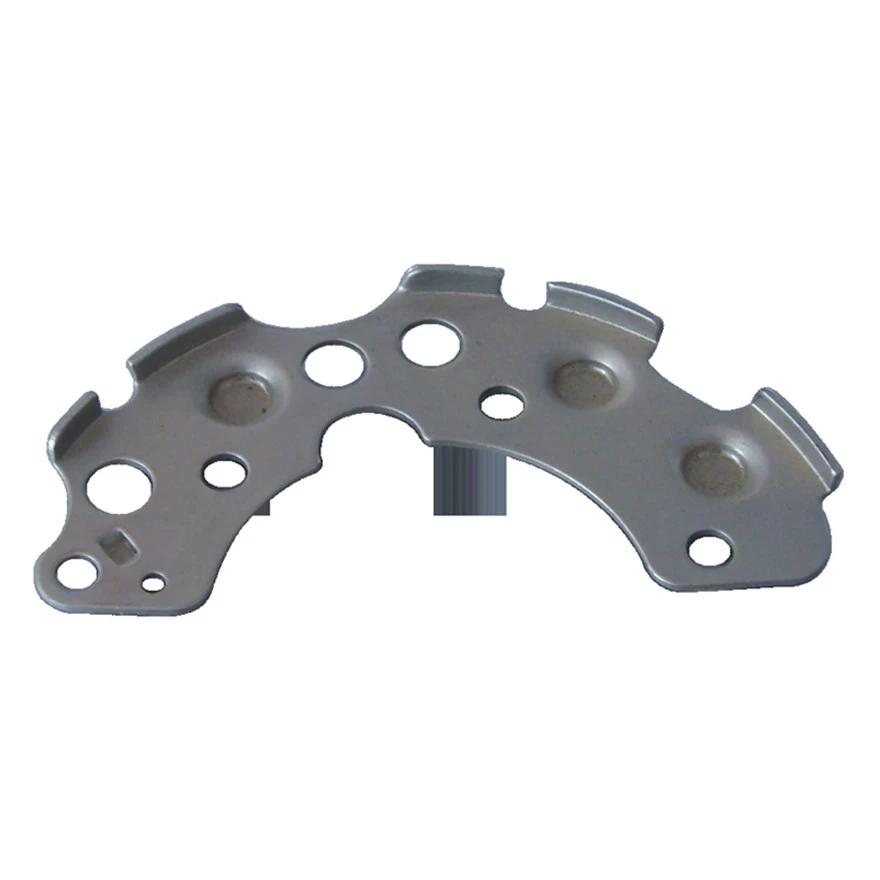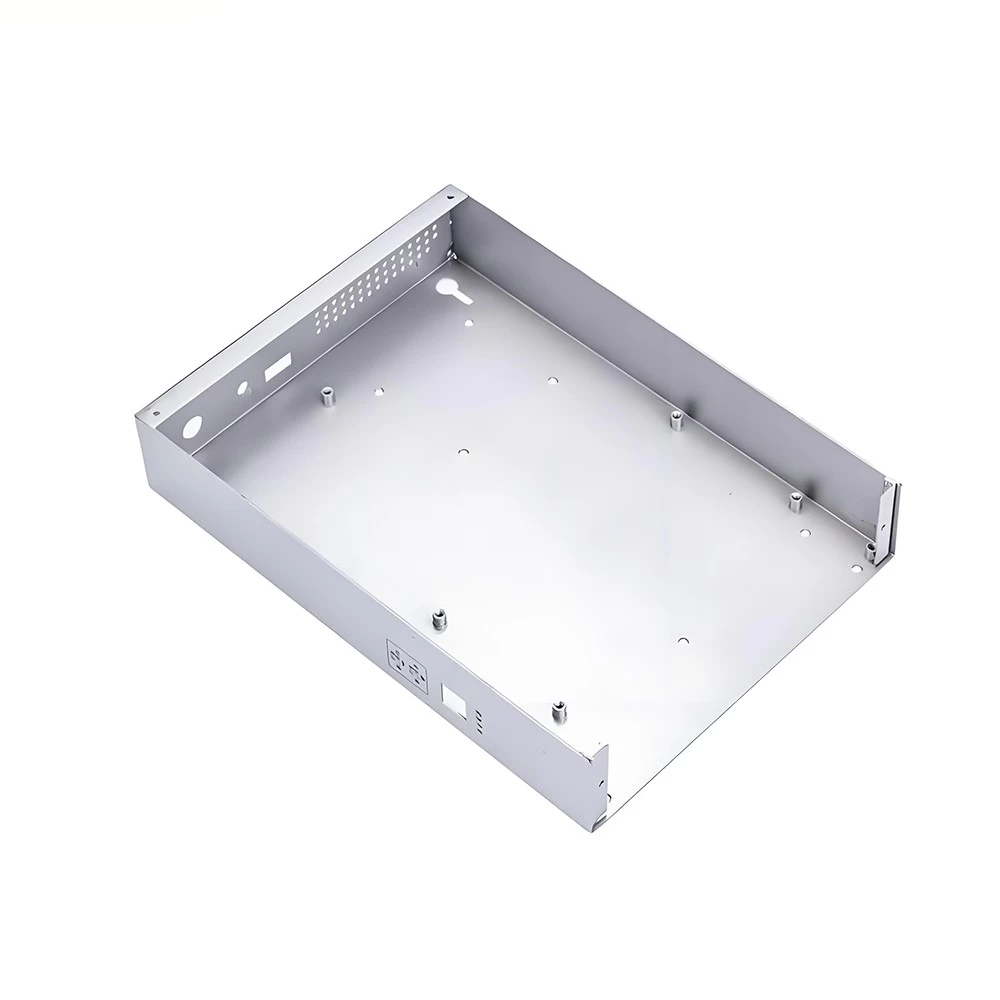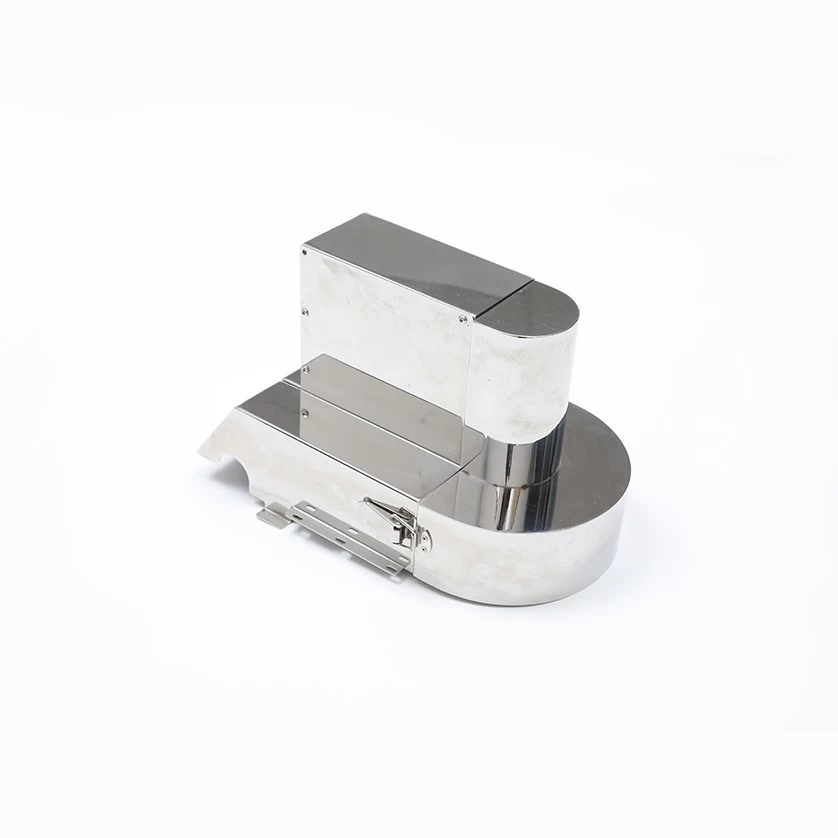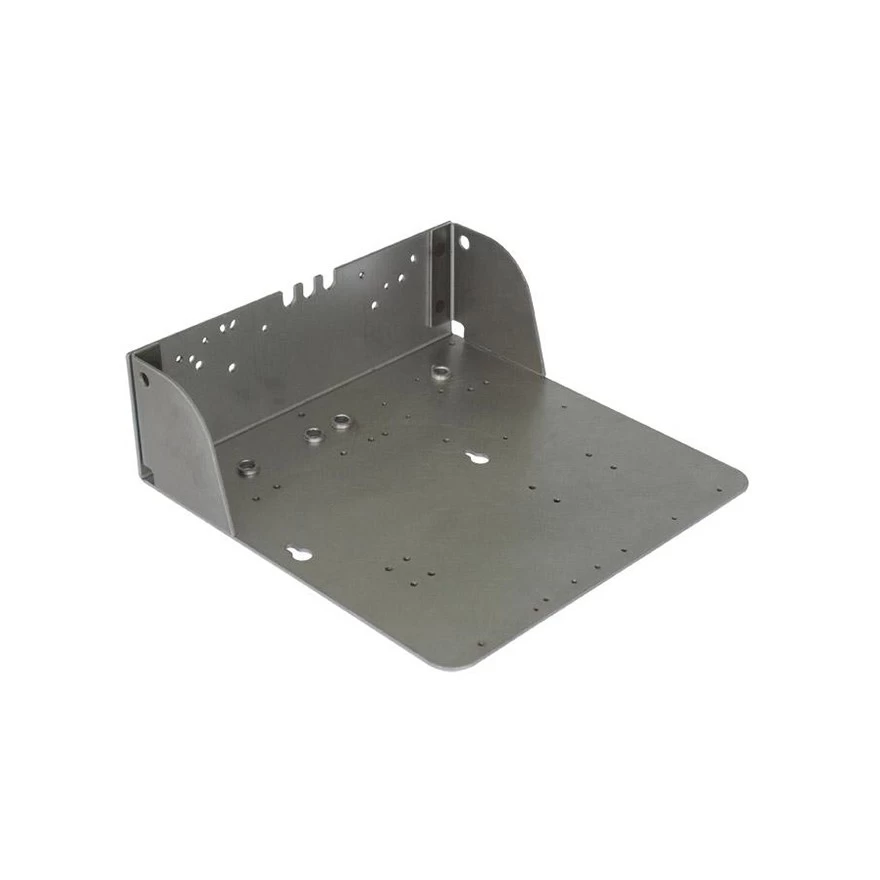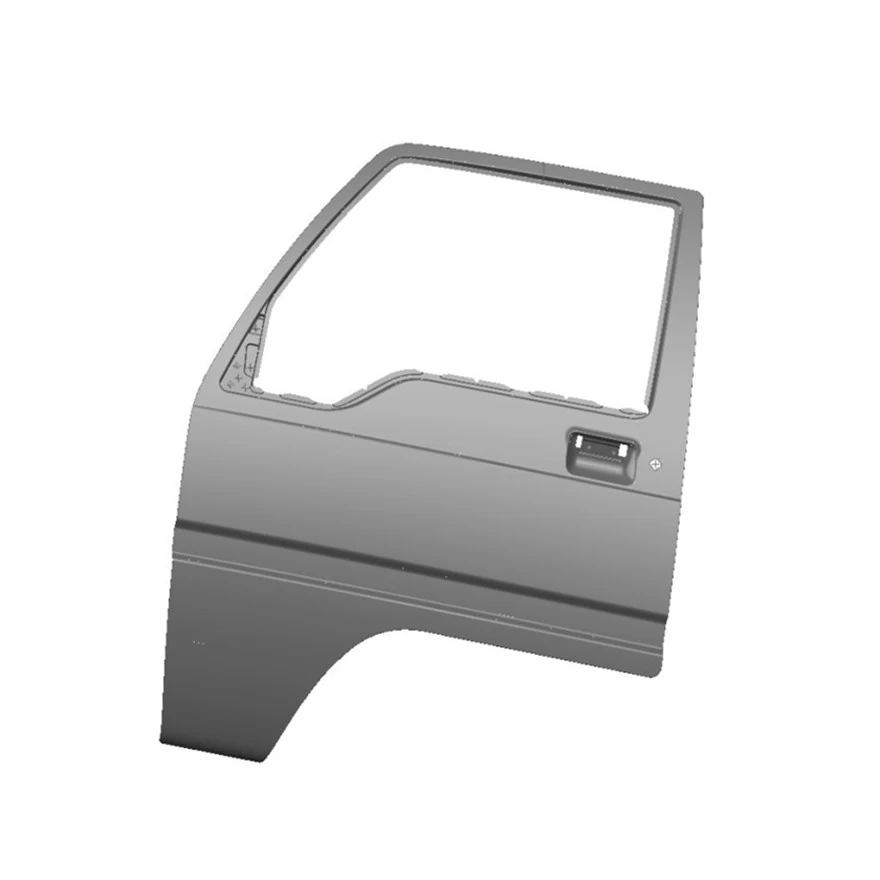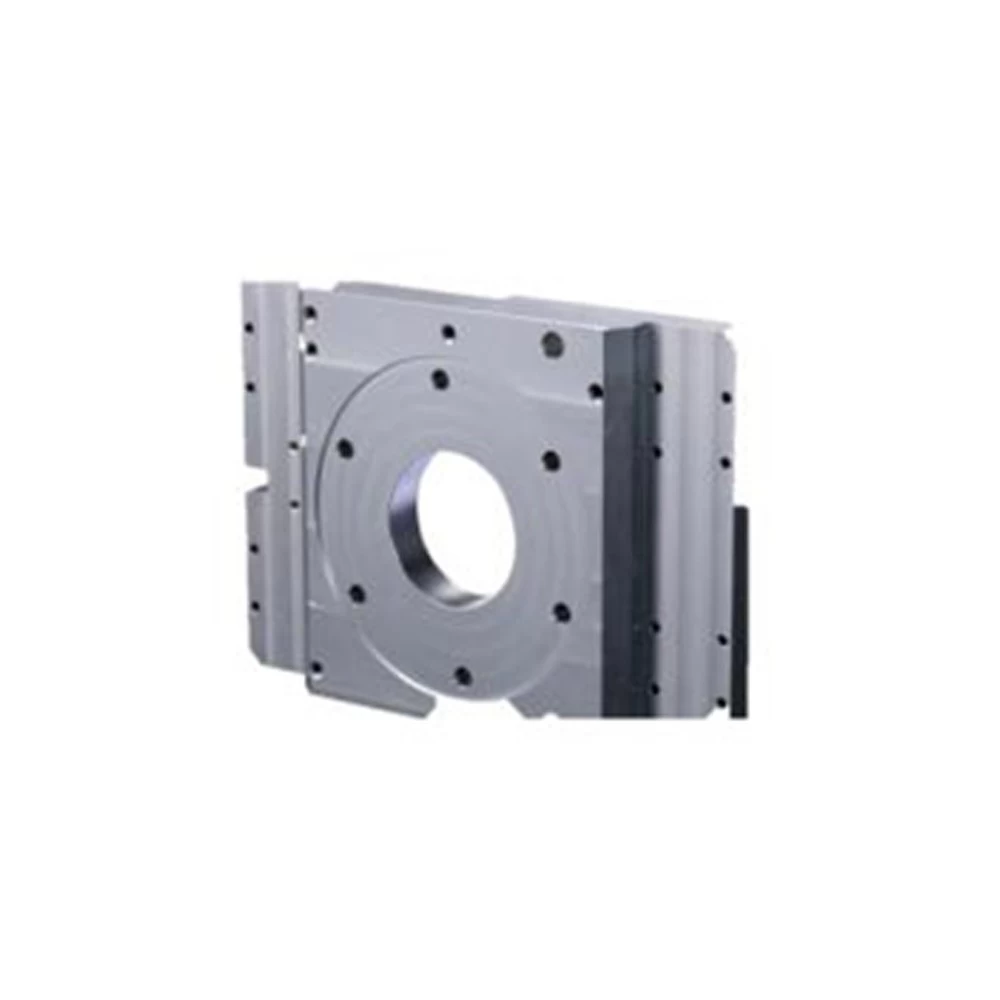Powder coating or painting on sheet metal product surface fabrication
HOW DOES POWDER COATING WORK?
The choice between painting vs. powder coating should really depend on the needs of your products.
Powder coating is a color-finishing technique in which powder is used in lieu of paint. The powder is applied with spray tools and heated to a chosen surface to form a color coat. Numerous ingredients can make the powder used for this process, such as acrylic, polyester, epoxy and polyurethane. Powder coating achieves a thicker and more consistent finish than you usually get with spray paint.
You see examples of powder coating on a vast range of everyday appliances and household fixtures, such as stoves, refrigerators, laundry machines, tables and lamp vases. Powder coating is also quite common today in the finishing stages of auto assembly.
Powder coating is achievable with either thermoplastics or thermosets. The former is a chemical-free process that relies on heat to bring the powder to its thick, solid-coat state. With thermosets, chemical additives interact with the powder during the application stage. The end result of thermoplastic and thermoset powder coatings are virtually identical. In both processes, you heat the powder to form the color finish on a chosen surface.
In advance of a powder coating, you must prepare the chosen surface to ensure proper adhesion of the finish. For industrial applications, you will clean the surface — usually a metal — of any oil or dirt that would otherwise hinder the usage of powder.
POWDER COATING BENEFITS
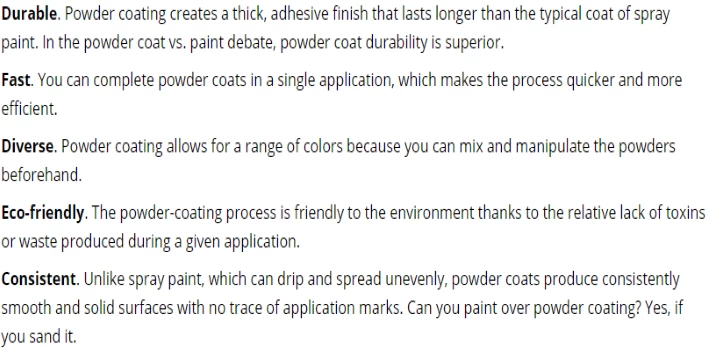
The benefits of spray paint include:
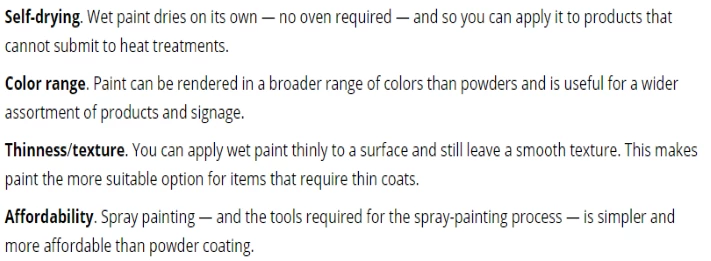
Comparision of powder coating and paint


